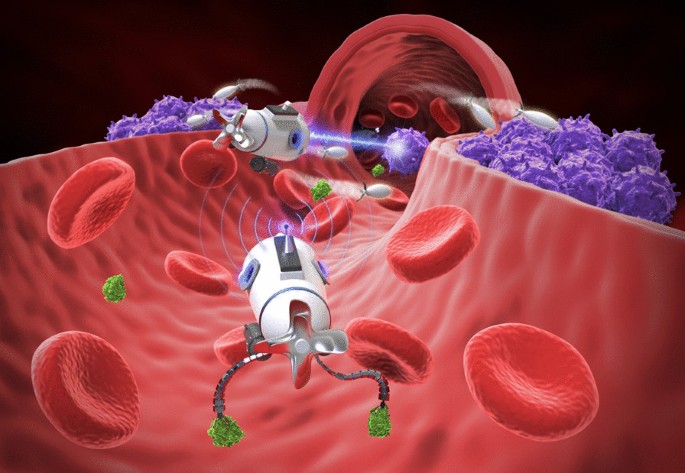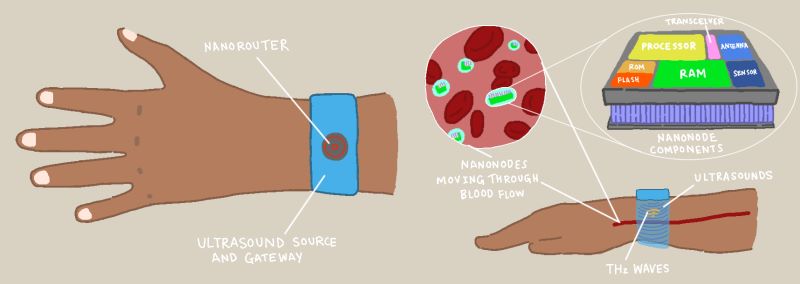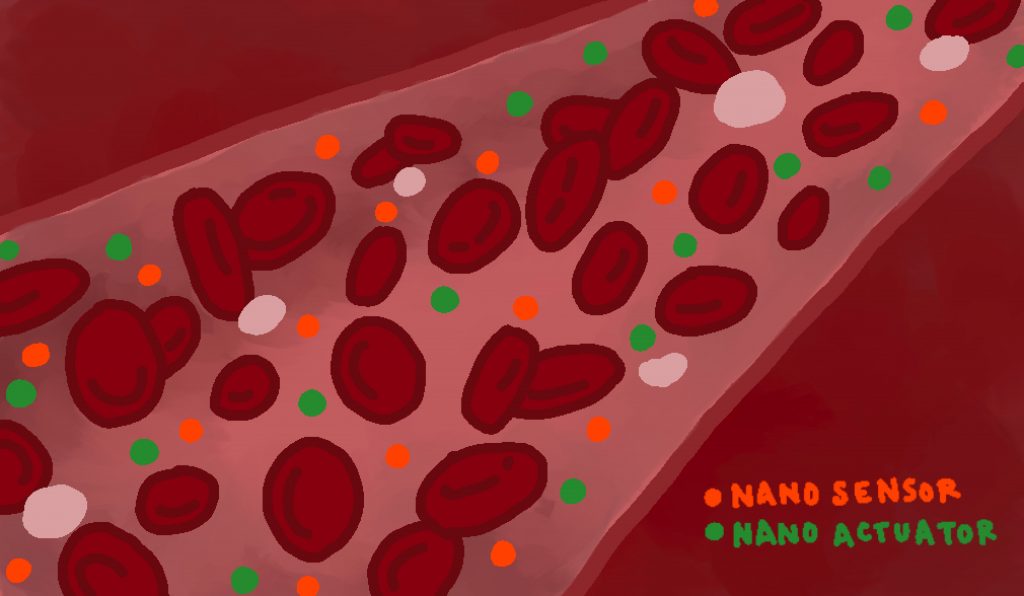Military Operations in Civilian Disguise: Bio-Nano Governance and Terms of Use for Humans 2.0 (2)
Read the first part of the article
The Military and Covid Injections
In the United States, Operation Warp Speed (OWS), the U.S. project to develop, produce, and distribute 300 million doses of a “coronavirus vaccine” by January 2021, was compared to the Manhattan Project by President Trump when he unveiled it on May 16, 2020, a clear allusion to top-secret military technology.

OWS was led not by scientists and healthcare specialists, but by the military. An organisational chart shows that 61 of the 90 leadership positions in OWS were occupied by DoD officials, including four generals. The military’s role was not merely to assist with logistics; rather, the DoD was in full control of the “vaccination” programme from its inception, including “development, manufacturing, clinical trials, quality assurance, distribution and administration”. The White House Coronavirus Response Coordinator was Deborah Birx, whose colourful scarves created a civilian appearance while media reports touted her as the next head of the HHS, a civilian agency; Birx, however, holds the rank of Colonel. The “covid vaccine” rollout in the United States, as in Europe and Australia it seems, was a camouflaged military operation from start to finish.
Under Operation Warp Speed, contracts were clandestinely awarded to “vaccine” companies via Advanced Technology International, which has close ties to the CIA. The use of a non-governmental intermediary meant that regulatory oversight and transparency conferred by regular federal contracting mechanisms could be bypassed.
In a biopolitical era where control is exercised directly over human bodies (Agamben, 1998), – with military-grade bio-nano technologies deployed through “Trojan Horse ‘civilian’ systems” and so-called “vaccines” doubling as transhumanist delivery mechanisms, in a transhumanist war on humanity – injections provide the perfect weapon to penetrate behind enemy lines.
Military Operations in Civilian Disguise?
In addition to its assumption of dominion over civilian bodies, documents such as the DEVCOM report illustrate that Proteus is not the only high-level military-intelligence actor advising senior decision makers to prepare for societies stratified along transhumanist class lines.
Similarly, and consistent with the notion of obligatory ‘enhancement’, a 2009 research report from the Air War College of the US Air Force titled Cognition 2035: Surviving a Complex Environment through Unprecedented Intelligence talks about “Enhanced Human Intelligence” being compulsory in some scenarios by 2035, for instance as a condition of employment. The report concludes that, “despite the potential pitfalls of cognitive technologies, they must be pursued”. But why? Is “enhanced human intelligence” even a real possibility?
On the level of R&D policy, in a 2013 statement by the DARPA Director to the United States Senate Subcommittee on Emerging Threats and Capabilities, the Director pledged DARPA’s commitment to working with the civilian sector to advance technologies such as synthetic biology, brain-computer interfaces and robotics. She presciently added that DARPA was at the time working to “accelerate the timeline” for “novel techniques that will enable the human body to directly manufacture its own vaccines”. One of DARPA’s objectives for those vaccines, the Director told the Senate Subcommittee was, “bypassing traditional vaccine manufacturing processes that can take months”. In other words, accelerating the novel ‘vaccines’ to market. Such acceleration of novel vaccination technology later came to pass in the form of a Moderna-DARPA collaboration on the synthetic mRNA platform of 2020, rolled out at Warp Speed.
With equal prescience, in that same year, a 2013 follow-up report to the foundational NBIC document of 2002, this time focussed on the societal rollout of nano-bio-info-cogno technologies, predicted, in keeping with NASA’s timeline for a BioNANO Age, that from 2020 onwards the “convergence” of bio-nano technology and society would be “systemic”, and driven by a “higher level purpose”. (A higher level purpose, we wonder, such as combating a “novel threat” as noted by the UK MoD, in the form of a “novel” virus, creating an “obligation” to use DARPA’s novel auto-immunisation technology?) The 2013 paper was sponsored by NASA and the Office of Naval Research among others, with contributors and reviewers including Moderna co-founder Robert Langer, and personnel from Johnson & Johnson, IBM, Hewlett Packard, Microsoft and the US Army. It was titled Convergence of knowledge, technology, and society (CKTS): Beyond Convergence of Nano-Bio-Info-Cognitive Technologies. The report moved a step beyond fostering the convergence of technology and biology, which underpins transhumanism, to advocating the convergence of technology and governance, which underpins technocracy.

To this end, the document sought “radical paradigm transformations in human endeavors” to “accelerate progress in the foundational NBIC technologies”. The document advocated a “new governance model” that would involve “public-private partnerships” and a “global convergence network”. By 2020, with the “higher level purpose” of a war on a virus, the WEF’s network of public-private partnerships and its push for “convergence” of our physical, digital and biological identities (under the Fourth Industrial Revolution moniker) seemed to fit the bill. The 2013 CKTS document also advocated drawing on artificially augmented and inter-connected brains (which it referred to as “convergent cognitive technologies”) for future decision-making, particularly in the area of public health, and “at all levels of society”. We analyze the viability of such proposals, and their likely true intention, below.
By 2020, as public-private partnerships, including with CKTS report contributors Moderna, Johnson & Johnson and Microsoft, were gearing up for their military-style, lockdown-driven, bio-nano, injection-based “higher level purpose” war on a virus, a NASA-Langley report titled Disruptive Technologies and Their Impacts Upon Society included a section titled “Increasing Cyborgism”. The report observed that “humans are developing Humanity 2.0”. It declared society to be “entering the Virtual Age with major shifts to direct brain to machine interaction, humans merging with machines, immersive digital reality, autonomous robotics, tele-everything, a global sensor grid and a shared global consciousness”. The report added, almost as an aside, “The major existential issue will then become ‘Whither Humans’?”
Who needs “heavy”, “tender”, “slow”, carbon-emitting, climate-changing humans on an ‘over-populated’ planet anyway?
Dual-Use Technologies and Bio-Nano Power
Approximately twenty years before NASA-Langley declared society’s entry into the Virtual Age in 2020, at the turn of the millennium when the course towards Humanity 2.0 was being charted in the 424-page DoD-backed NBIC report, advancements in brain-machine interfaces were being viewed as “an important next step in human evolution, potentially as important as the evolution of the first language spoken between our ancestors”. Via brain-to-brain and brain-to-web connections, it was hoped that “linked enhanced persons” of the future would form “a networked society of billions of human beings”, together creating a “global collective intelligence”, or hive consciousness. In other words, officialdom’s vision for its “enhanced” citizenry of the future was as nodes on a vast network.

Such a development, needless to say, irrespective of whether it ‘enhances’ the lives of the people concerned, would significantly enhance the exercise of power, particularly with respect to issues such as information operations and population control. Consistent with this theme, in 2004 the US Army War College Center for Strategic Leadership said of 2020 scenario planning, “across all of the worlds, it is clear that instruments of power and sources of threat will come in smaller and smaller packages. Classic tools of state power (e.g., weapons and surveillance systems) will be dramatically miniaturized as a result of both bio- and nanotechnology”.
The observations were made as part of a presentation to The 9th International Command and Control Research and Technology Symposium, an annual event headed by a former DOD official, which continues today. Interestingly, on the same page of the same Powerpoint presentation, looking towards the year 2020, the War College noted that, “biological viruses are good examples of both instruments of power and source of threat”.
Which was a curious statement for its time. Why was the Army War College Center for Strategic Leadership describing viruses as instruments of power in 2004? The statement was made 16 years before the Army had partnered with the US president under Operation Warp Speed to coercively deploy bio-nano vaccines as intravenous weapons, purportedly against a virus. The statement was also made 16 years before citizens were placed under effective house arrest to flatten an over-hyped viral curve. And 16 years before emergency governance and emergency medicine merged, to create a brave new era of politico-medical rule, empowered to suspend fundamental rights such as freedom of movement and bodily autonomy, all in the name of a virus.
Meanwhile, besides viruses, what kinds of miniaturized instruments of power might the US Army Center for Strategic Leadership have been referring to?
While there are numerous candidates, “nano-taggants”, including smart dust, are openly discussed as tools of power in military-intelligence literatures. Smart dust, which dates to the 1990s, consists of miniature microelectronic particles, as small as 20 microns by 2020, which are fashioned from nano-components, and which can be sprayed, scattered, implanted, or inhaled, forming wireless networks capable of transmitting information, “about anything nearly anywhere” (such as temperature, location, light, movement, sound and so-on), to a cloud or other base for processing.

In a paper from the US Air War College, Center for Strategy and Technology titled Enabling Battlespace Persistent Surveillance: The Form, Function, and Future of Smart Dust, the technology’s ability to enable “dispersal of a wireless sensor network on the actual bodies” of adversaries is described, with the capability to provide “vital tactical information, such as location and numbers, to support counterinsurgency operations”. The paper adds that “Smart Dust offers a low observable ISR [intelligence, surveillance and reconnaissance] asset providing detailed information on insurgents and the US populace”.
Having shrunk from the size of a grain of sand in the 1990s to microscopic dimensions by 2020, smart dust appears to embody what the US Army War College might have meant when it said that sources of power would be coming in smaller and smaller packages. The inclusion of the US populace as smart dust surveillance targets in US Air Force reports, moreover, is consistent with a recurring theme around counterinsurgency in defense science and technology papers, such as one from the Air War College Center for Strategy and Technology in 2009, titled Disaster-Proofing Senior Leadership. The paper, again from the US Air Force, warns leaders that the “nano-enabled battlefield” of the future will create adversaries “across the spectrum from state actors to empowered persons”.
To be ready for the nano-enabled battlefield and the empowered persons of the future, the 2007 smart dust paper stresses that, “the US military needs to invest their energy and money today to develop persistent surveillance applications such as Smart Dust”, making clear that such “persistent surveillance” should be society-wide. It counsels: “the United States needs to mount an effective information operations campaign now, and in the future, to educate the public on the benefits of Smart Dust to their way of life”.
Should a leader wish to domestically surveil their populations in this way, in 2007, the same year the Smart Dust paper was published, an enabling legislative and practical framework was established under the auspices of 9/11. In August of ‘07, President Bush signed into law an Act titled Implementing Recommendations of the 9/11 Commission Act of 2007. As part of that Act, a National Biosurveillance Integration Center was established, in order to track any future “biological event of national concern”. Such an event was defined as either an act of bioterrorism or an outbreak of any infectious disease that “may” (or may not) result in an epidemic. Faced with such an infectious disease, the Integration Center, “in consultation with the Director of National Intelligence [and] the Under Secretary for Intelligence and Analysis” was tasked with aggregating the nation’s surveillance data from government sources, as well from “private sources of surveillance, both foreign and domestic”. In other words, since 2007, US intelligence has had the legal authority to gather surveillance data on its citizens, from public and private sources nationally and internationally, under the auspices of disease control. According to the Act, the Center (essentially a legislatively empowered transnational public-private surveillance partnership) has the responsibility to avail itself of the “best available” information technology, in order to track bio-events “in as close to real-time as is practicable”.
Looking back, we can’t help but wonder whether the Implementing Recommendations of the 9/11 Commission Act was triggered in 2020, as the world was swept 9/11-style into emergency mode by a “biological event of [inter]national concern”. Could smart dust, with its ability to be dispersed upon populations in the gust of a breeze – or on the end of a nasal swab — have fit the bill as the “best available” technology?
While covid ‘vaccines’ have gained the most attention as potential sources of covert nanotechnology deployment, the simple PCR nasal swab has also been examined by microscopists for undeclared inclusions since its mass roll-out in 2020. In 2023 Gatti and colleagues studied nine different PCR swabs for their morphology and chemical composition, using Optical Microscopy and a Field Emission Gun Environmental Scanning Electron Microscope with Energy Dispersive System. The scientists reported a number of substances on the swabs that had not been declared in the manufacturers’ data sheets. Those substances included black fibres that were present “in an almost systematic way”, silver nanoparticles, coatings on the swab fibres involving different combinations of Silicate, Zirconia, Titanium, Aluminium and Sulphur, and “extremely high” levels of what the authors described as “dust”. The dust on the nasal swabs was composed of Silicon, Carbon, Aluminium, Potassium, Oxygen, Magnesium, Titanium, Iron and Sulphur.
Did these elements reflect a “dirty environment”, as the authors proposed, or was it a reflection of other kinds of dust, such as Silicon-based ferromagnetic smart dust, or Silica-Alumina neural dust, for creating “a neural dust brain-machine interface (BMI)”? Either way, the authors warned that delivering undeclared nano-components such as these on the ends of nasal swabs “deeply inside nasal cavity” can not only damage the olfactory epithelium, but “finally reach the brain”.

All of which harkens back to NASA-Langley’s 2001 prognostication that a Bio-NANO Era (circa 2020) would see the surreptitious nano-tagging of everything and everyone, with microwave interrogation, for status and identification purposes. Followed by Yuval Noah Harari’s insistence in early 2020 that surveillance had gone under the skin with the arrival of The Pandemic™ (and its PCR tests). Was it smart dust they were referring to?
Alongside surveillance applications, in the commercial sphere, smart dust has been described as “the pinnacle of the Internet of Things”, with “the capacity to multiply IoT technologies up to a billion times”. Driven by IoT demand and related medical sensing applications, therefore, a report titled Technology Convergence 2035, from the US Army War College predicts that smart dust “will achieve mainstream commercial usage by 2028”.
Dual-Use Technologies and Bio-Nano Governance
Importantly, this simultaneous utility of smart dust to military and commercial / medical applications exemplifies the ‘dual use’ nature of nanomaterials and nanotechnologies. Dual use technologies are those with both civilian and military applications, and/or harmful as well as beneficial purposes, where harm can be perpetrated on a mass scale. A common ingredient in cosmetics, for instance, can be used to create mustard gas. Smart dust, similarly, may be used by medical personnel to monitor and treat disease, or, surreptitiously, by those in power to surveil and wirelessly network their citizens, or as a bio-nano weapon to “identify, and/or destroy certain cell types in the body”.
On this theme, in the book Nanoweapons: A Threat to Humanity, a physicist and former IBM and Honeywell executive, who led advancements in microelectronics and sensors (such as smart dust), warns of existential threats from weaponisable nanotechnologies “previously relegated to fantasy”. The technologies he describes include “self-replicating smart nanorobots”, which “search for and destroy targets without human input, and self-replicate with materials found in the environment”. Similarly, in 2001, along with smart dust, NASA Langley described, “Micro Dust Weaponry” or “Micron sized mechanized ‘dust’ which is distributed as an aerosol and inhaled into the lungs. Dust mechanically bores into lung tissue and executes various ‘Pathological Missions.’ A Wholly ‘New’ class of Weaponry which is legal”.
The upshot of the dual uses for many, if not most, bio-nanotechnologies is that their covert deployment as weapons is as simple as calling them by some benign name, for instance a medical intervention. Which reminds us of NASA Langley’s commentary on the “attack capabilities” of “Trojan Horse ‘civilian’ systems”. Combined with the increasing designation of Western domestic populations as adversaries, (cf 2021 reports on domestic “terrorism”, “extremism”, “radicalism” and “conspiracy theorists” by the European Commission and the US Department of Homeland security), citizens would be wise to remain vigilant to the potential dual use and abuse of bio-nano power.
Yet, the question remains: Are there any indications that those in power seek to translate bio-nano/transhumanist policy advice into practice, for instance by pushing ahead with microelectronic (’smart’) dust? Are they even interested in bio-nano power?
If the proof is in the policy pudding, it seems that they are indeed. To name just a few trans-administration examples, the Clinton Administration launched the National Nanotechnology Initiative (NNI) in 2000 on the advice of the lead author of the landmark DoD-backed NBIC report. The NNI continues to this day. Shortly thereafter, in December 2003, President George W. Bush signed the 21st Century Nanotechnology Research and Development Act, or Public Law 108-153, to create a National Nanotechnology Institute. Internationally, similar activity has been taking place around the world, in Europe, China, Iran, India, South Korea and Saudi Arabia, to name just the most active regions. Also spawned by the NBIC initiative was the European Union 2014-2020 Horizon 2020 research and innovation program, which saw the 2018 launch of the “Horizon 2020 Graphene Flagship” project, Europe’s largest ever research initiative, aimed, according to its website, at integrating the expertise of 170 academic and industry partners to “bring graphene innovation out of the lab and into commercial applications”, “accelerating the timeline for industry acceptance of graphene technologies”.
Building upon this growing international nanotechnology base, in 2013 the Obama Administration launched its Brain Research through Advancing Innovative Neurotechnologies (BRAIN) initiative, a public-private partnership that runs to 2025, involving DARPA, IARPA, the NIH, the FDA, and the Military Services among other government agencies. Its projects include those in nanoscience, brain-machine interfaces and bioengineering. A few years later, in 2016 under the Trump Administration, Congress established an Under Secretary of Defense for Research and Engineering (USD R&E) as part of the 2017 National Defense Authorization Act. The new Under Secretary “would take risks, press the technology envelope, test and experiment, and have the latitude to fail, as appropriate”. The following year, on December 18, 2017, the Trump Administration released its National Security Strategy, declaring that “the United States will prioritize emerging technologies critical to economic growth and security, such as data science, encryption, autonomous technologies, gene editing, new materials, nanotechnology, advanced computing technologies, and artificial intelligence”.

More recently, in February 2022, during the Biden Administration, the Under Secretary of Defense for Research and Engineering announced that her office would “spearhead a National Defense Science and Technology strategy for the Department of Defense (DoD)” which sought “success through policies that encourage innovation and risk taking”. The “Critical Technology Areas” of interest included human machine interfaces, advanced materials, future generation wireless, and AI. Next, in September 2022 Biden’s Whitehouse issued an executive order announcing the funding of a new “bioeconomy”, under which the United States would invest in and “develop engineering technologies and techniques to be able to write circuitry for cells and predictably program biology in the same way we write software and program computers”.
With its problematic casting of biology as technology, to be manipulated like a computer program in the name of the economy, Biden’s Executive Order is noteworthy in that the order was undertaken in lockstep with the US military. Days after the Biden Executive Order was issued, the same DoD Research and Engineering Under Secretary, who is also the Pentagon’s Chief Technology officer and oversees the activities of DARPA, said “This Executive Order will advance and synchronize our efforts — across the DoD and across the Federal Government”. Prior to her political and military appointments, the Under Secretary spent much of her career at Raytheon.
And so it is that while populations have been dazzled, decoyed and distracted by the theatre of electoral politics, governments and the US military have quietly laid the conceptual, structural and technological foundations for transhumanist societies — administration after administration. Behind the spectacle of Clinton’s sexual exploits, Bush’s blunders, Obama’s wars, Russiagate, and the January 6th concoction, a military operation in transhumanism has been marching steadily on, largely unreported and unchallenged. No election outcome appears to have ever altered that trajectory. The 2024 election, we wager, will be no exception.
yogaesoteric
May 24, 2024
